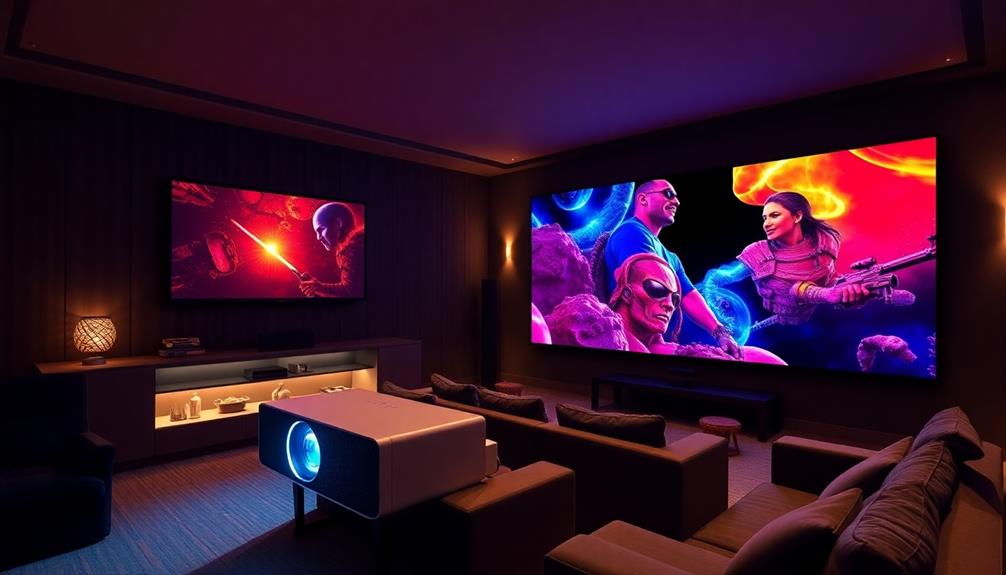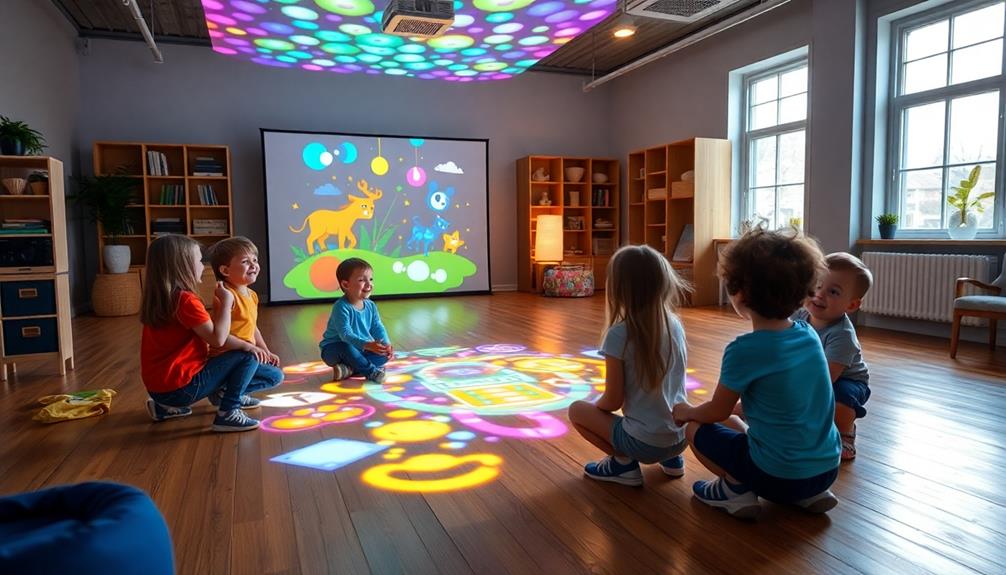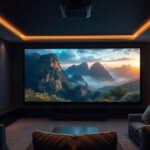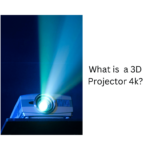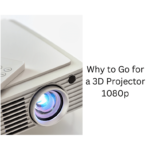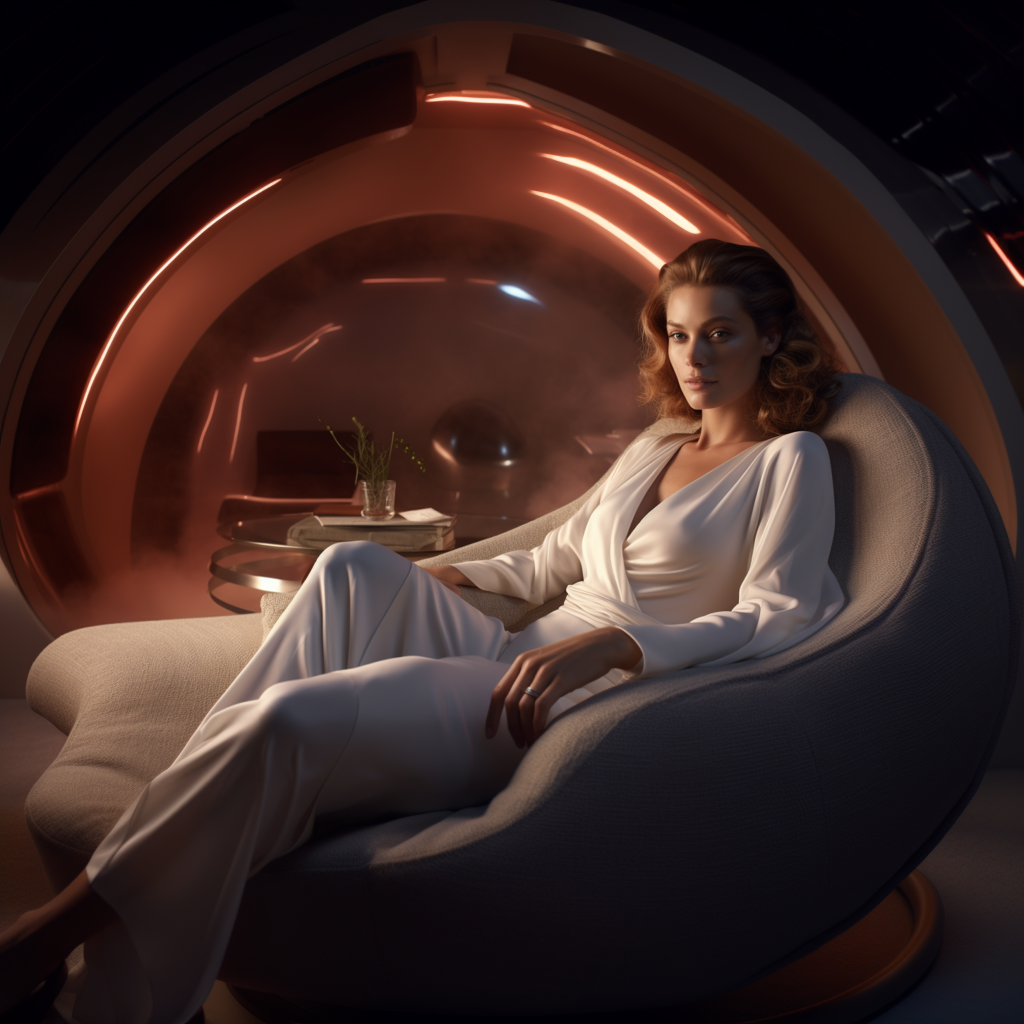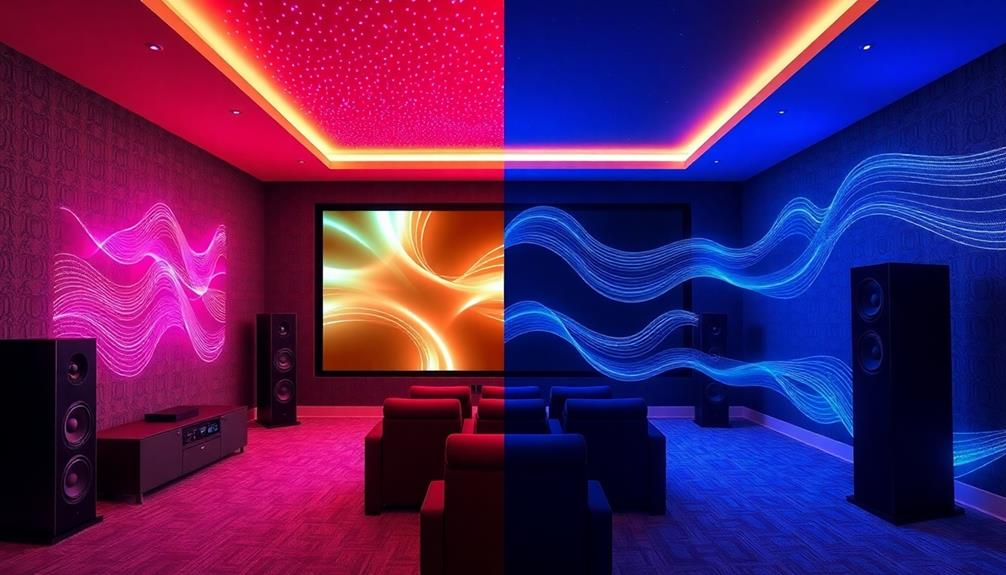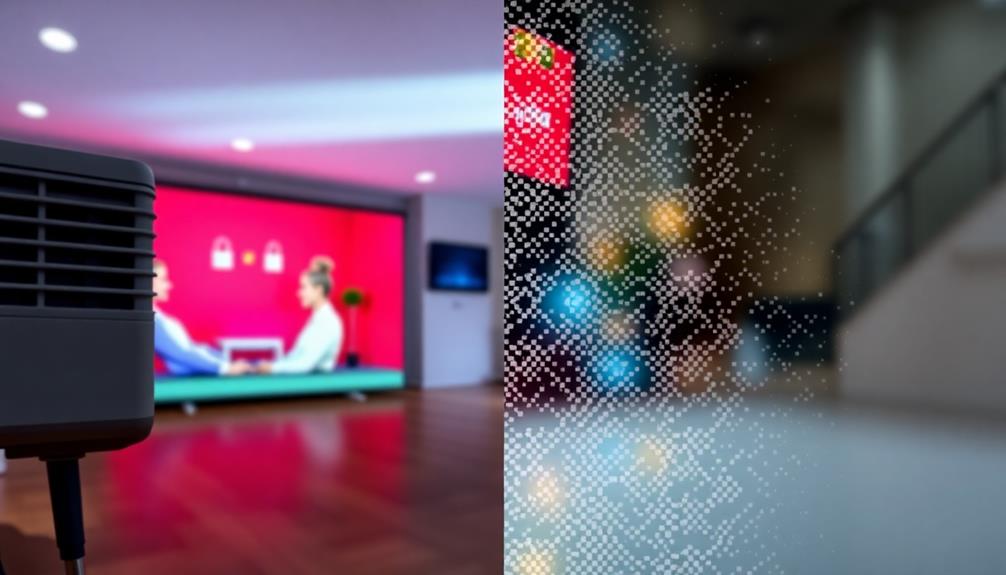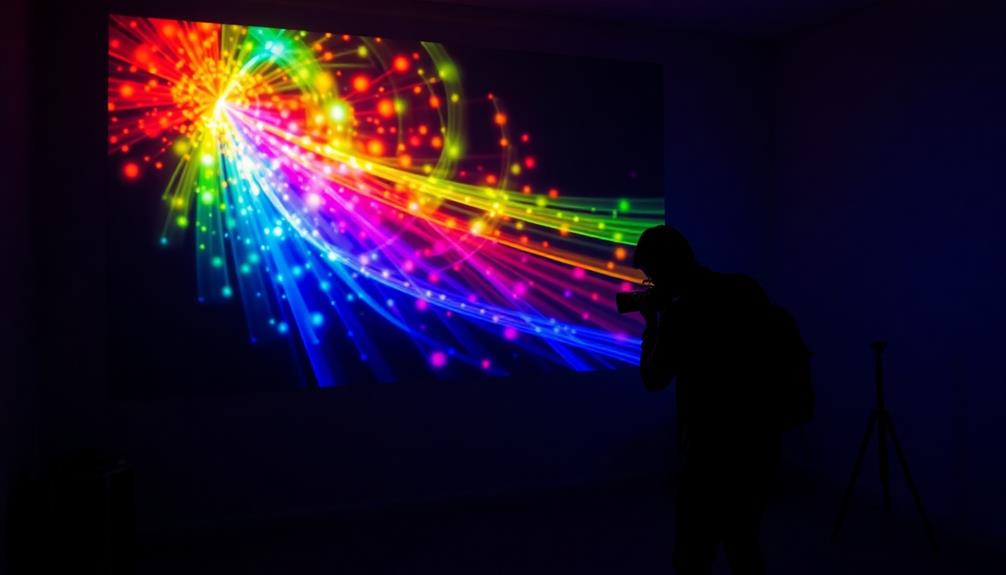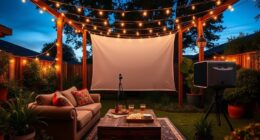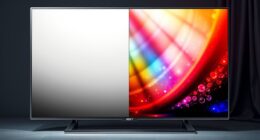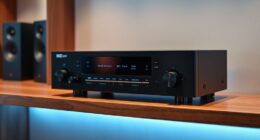Investing in a 3D projector can truly elevate your home entertainment experience. It offers a unique, immersive viewing adventure, enriching your movie nights with stunning visuals. While the demand for 3D content has decreased, high-quality projectors still provide outstanding performance, especially with 4K capability and advanced audio technologies. Pay attention to factors like brightness, contrast, and the quality of your 3D glasses to enhance comfort and clarity. While some users report fatigue, a well-set-up projector can mitigate these issues. If you're curious about how to choose the right one for your needs, there's more to explore.
Key Takeaways
- 3D projectors provide a unique immersive experience, enhancing home viewing with high-quality visuals and advanced audio technologies.
- Comfort during 3D viewing is essential; investing in high-quality glasses reduces fatigue and improves clarity.
- Brightness and contrast are crucial for effective 3D viewing; aim for projectors with over 2000 lumens and a contrast ratio of 1,000:1.
- Home setups allow for personalized viewing experiences, offering flexibility and the potential for superior picture quality compared to theaters.
- The future of 3D content is promising, with filmmakers exploring innovative storytelling techniques that enhance emotional depth and audience engagement.
Current Relevance of 3D Projectors

3D projectors still hold a unique place in home entertainment, offering an immersive viewing experience that few technologies can match. While the demand for 3D content may be declining, these projectors remain relevant, especially for those who prioritize high-quality visuals.
When paired with advanced audio technologies like Dolby Atmos and DTS:X, the viewing experience is elevated, creating a cinematic atmosphere at home.
For peak performance, consider investing in high-quality 4K-capable DLP projectors, such as the BenQ HT3550 or Optoma models. These projectors deliver superior sharpness and minimal crosstalk, ensuring that your 3D visuals are crisp and engaging.
DLP technology is often preferred for its clarity, while 3LCD projectors may struggle with sharpness despite better blacks and brightness.
Although many users see 3D as just a bonus feature nowadays, the immersive experience that 3D projectors provide can enhance movie nights and gaming sessions.
As you explore options, keep in mind that while the trend is shifting, a high-quality 3D projector can still transform your home entertainment setup and leave a lasting impression on your viewing experience.
User Preferences and Experiences

When choosing a 3D projector, you'll notice significant differences between brands like Epson and BenQ, especially in contrast and lens options.
Your comfort during viewing can also vary, as some people experience fatigue while enjoying 3D content.
It's crucial to evaluate both the projector's capabilities and your personal preferences to enhance your viewing experience.
Brand Comparison Insights
How do different brands stack up when it comes to user experiences with 3D projectors? Users often find Epson projectors outperforming alternatives like BenQ, particularly in contrast and motorized lens shift features. This makes Epson a popular choice for home theater enthusiasts keen to watch 3D movies.
However, crosstalk issues can arise, and many users have noted that the quality of 3D glasses greatly affects this problem. Non-official glasses often worsen the experience.
While a considerable number of users consider 3D a novelty, enjoying it occasionally, others truly appreciate the immersive experience it offers. For those focused on high-quality 3D viewing, the BenQ HT3550 and HT5550 models shine, thanks to their DLP technology, which provides superior sharpness and minimal crosstalk.
User feedback also highlights the importance of comfort during 3D viewing. Depending on the projector and glasses used, some individuals experience fatigue, indicating that preferences and experiences can vary widely among brands.
Ultimately, knowing what to expect from each brand can help you make an informed decision when investing in a projector that best supports your movie-watching habits.
Comfort and Fatigue Issues
Comfort during 3D viewing is a critical factor that can make or break your experience. Many users report visual fatigue after extended sessions, and comfort levels can vary greatly based on individual preferences and projector setups. Crosstalk, often stemming from low-quality or non-official 3D glasses, can intensify discomfort, diminishing your enjoyment.
To enhance your 3D viewing experience, consider the following factors:
| Factor | Impact on Comfort | Tips for Improvement |
|---|---|---|
| 3D Glasses Quality | Reduces crosstalk, enhances brightness | Invest in high-quality glasses like Xpand X105-RF-X1 |
| Seating Arrangement | Affects viewing angle and distance | Experiment with different setups to find your sweet spot |
| Projector Settings | Can lead to fatigue if not optimized | Adjust settings for brightness and contrast |
| Viewing Duration | Longer sessions increase fatigue | Opt for 2D viewing for extended periods |
Some users prefer 3D as a novelty, enjoying it occasionally to avoid fatigue from prolonged exposure. By focusing on comfort and addressing crosstalk, you can maximize your 3D enjoyment.
Technical Considerations for 3D Viewing
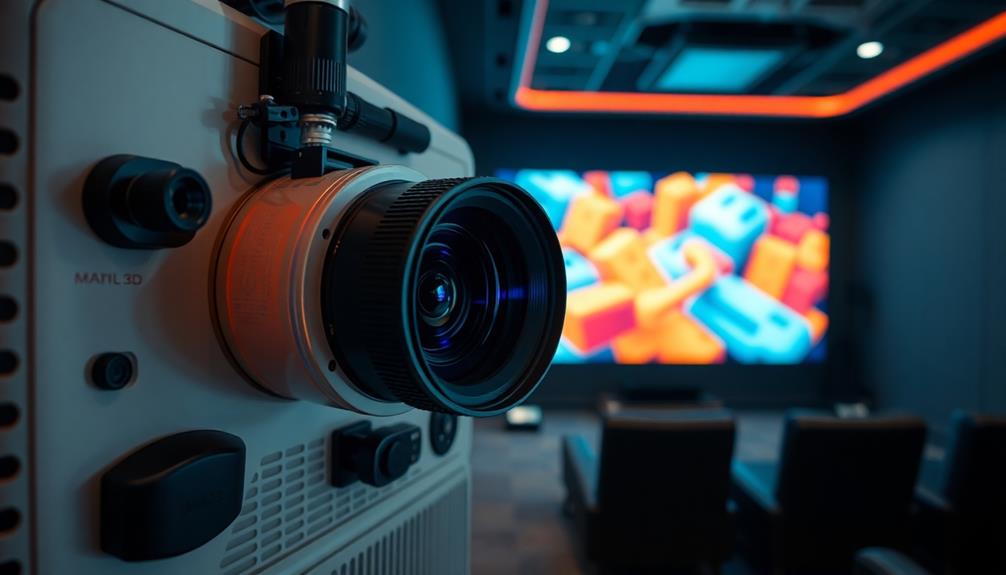
When you're setting up for 3D viewing, brightness is key; you'll need a projector with higher lumens to guarantee those vibrant images pop.
Screen size also plays a role, as larger displays may require higher gain screens to maintain quality.
Don't forget the quality of your 3D glasses—choosing the right pair can drastically improve your overall experience.
Brightness Requirements
For an immersive 3D viewing experience, understanding brightness requirements is vital. When using 3D glasses, you'll notice a light loss that necessitates higher brightness levels. Aim for projectors with at least 1,800 to 2,500 lumens for ideal viewing. Your screen size plays a significant role in how brightness is perceived; larger screens may require even more lumens to maintain clarity and vibrancy.
Additionally, the contrast ratio is essential for enhancing depth and detail in 3D visuals. Ideally, look for projectors with a contrast ratio of at least 1,000:1 to guarantee your images pop with life. If you plan to watch 3D content in rooms with ambient light, higher lumen output is particularly important.
Don't forget to experiment with your projector settings. Adjusting brightness and contrast can dramatically improve your 3D performance, allowing you to fine-tune the experience to your liking.
Screen Size Impact
Choosing the right screen size can greatly impact your 3D viewing experience. Larger screens can enhance immersion, but they also require more lumens for effective visibility and detail in 3D projections. If you go for a bigger screen, make sure your projector can handle the brightness demands, or you might end up with a dim image.
Using a higher gain screen can improve your experience by reflecting more light towards you, but be cautious; too much gain can distort the image.
Remember, your seating position matters too. Sit at a distance that allows the entire screen to be in your peripheral vision, which enhances immersion and reduces eye strain.
Don't forget to experiment with your projector's brightness and contrast settings. Each screen size may need different adjustments to achieve ideal visual performance.
Finally, consider the screen material you choose. It should complement both your projector's capabilities and your intended viewing distance to maximize depth perception in your 3D viewing.
Glasses Quality Importance
The quality of 3D glasses plays a crucial role in your overall viewing experience. Choosing the right type can make a significant difference, especially when comparing Passive 3D glasses to Active Shutter options. High-quality glasses, like the Xpand X105-RF-X1, can drastically reduce crosstalk and enhance brightness. In contrast, cheaper alternatives might lead to frustrating ghosting issues.
When selecting your glasses, consider these factors:
- Comfort: Well-designed glasses prevent eye fatigue during long viewing sessions.
- Clarity: Active Shutter glasses synchronize with your projector's frame rate, delivering ideal image clarity and depth perception.
- Polarization: Passive glasses can degrade image quality, so choose wisely to maintain a vibrant viewing experience.
- Personal Preference: Official brand glasses don't always guarantee the best performance; testing various models can help you find your perfect match.
Ultimately, the effectiveness of your 3D projection hinges on the glasses you use. Investing in high-quality options guarantees you enjoy an immersive and enjoyable viewing experience.
Don't underestimate the impact that glasses quality has on your 3D enjoyment!
Impact of 3D Glasses
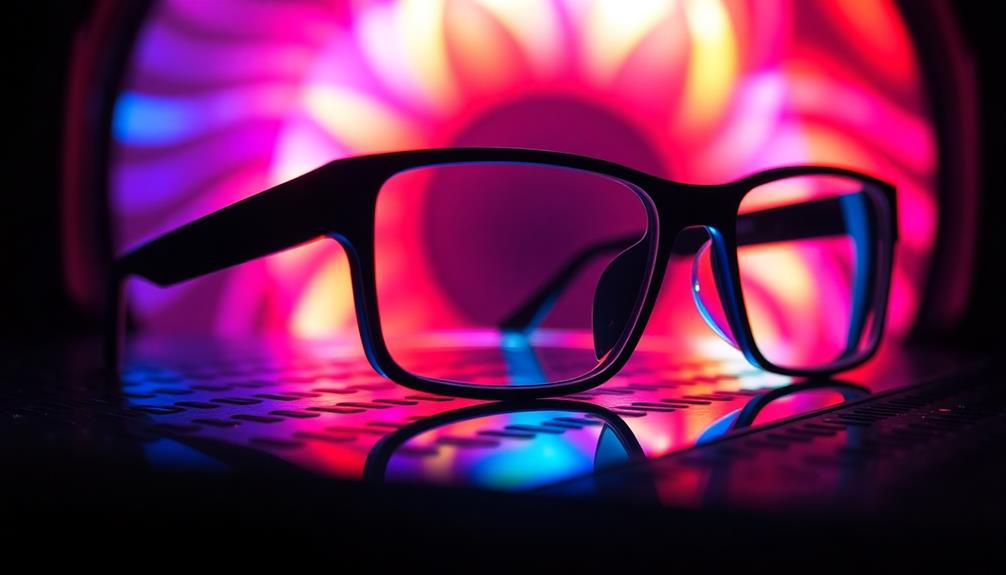
When it comes to experiencing 3D content, the type of glasses you use plays a significant role in shaping your viewing experience. High-quality 3D glasses can greatly enhance image quality and reduce issues like crosstalk, making your viewing more immersive. Active 3D glasses, for instance, sync with projector frames, providing superior clarity and brightness compared to cheaper options. However, they come at a higher price, so it's important to pair them with the same manufacturer's projector for best results.
On the other hand, passive 3D glasses are more budget-friendly but can compromise image quality, leading to a less engaging experience. User comfort also varies; some may find certain glasses cause fatigue during long sessions.
Here's a quick comparison of 3D glasses types:
| Glasses Type | Image Quality | Cost |
|---|---|---|
| Active 3D Glasses | Superior | High |
| Passive 3D Glasses | Acceptable | Low |
| High-end Models | Exceptional | Higher |
| Budget Models | Poor | Lower |
Choosing the right 3D glasses is important for maximizing your enjoyment of 3D content.
Future of 3D Content
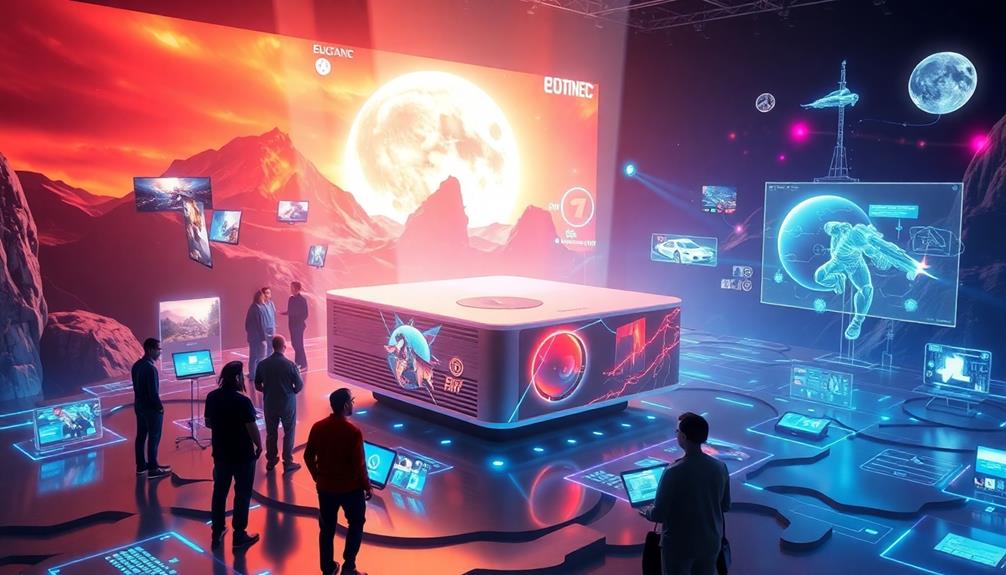
As filmmakers continue to explore new creative avenues, the future of 3D content looks promising. Despite some challenges in the home theater market, the entertainment industry is witnessing a resurgence of interest in immersive storytelling.
You might find yourself captivated by:
- Groundbreaking narratives that utilize 3D technology to enhance emotional depth.
- Vivid visual effects that transport you into worlds previously unimaginable.
- Innovative production techniques that bring a new level of realism to characters and settings.
- A growing catalog of titles as studios commit to developing more 3D releases.
While 3D Blu-ray titles remain limited, audiences are still hungry for experiences that draw them into the action.
Technological advancements in 3D production are aiming to improve visual quality and engagement, ensuring that the allure of 3D content endures. As users voice their desire for more 3D options across media platforms, there's potential for growth in this market.
The combination of cinematic experiences and advancements in technology suggests that 3D content will continue to evolve, paving the way for a brighter future in both theaters and home viewing settings.
Benefits of Home 3D Viewing
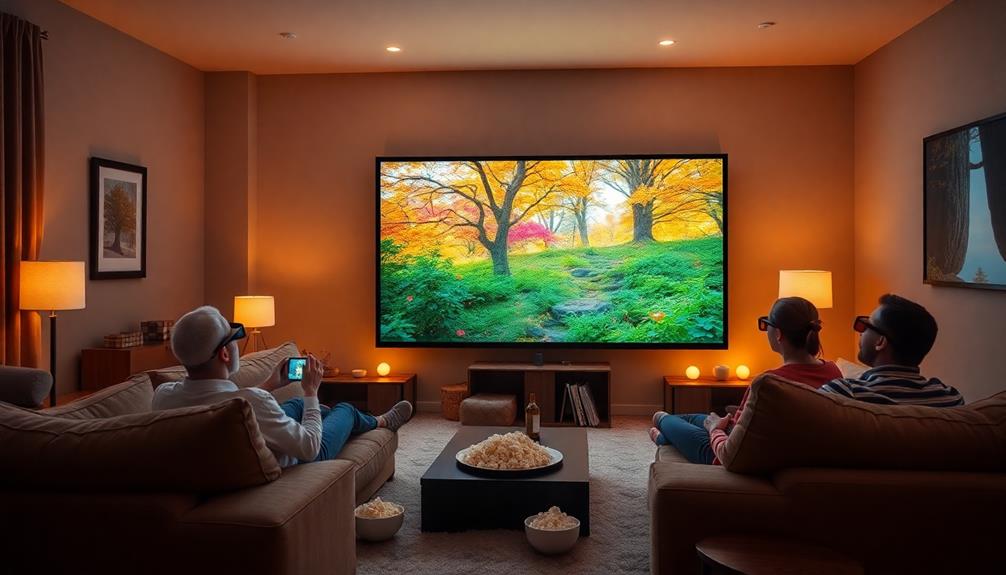
Enjoying movies in the comfort of your home offers a unique blend of convenience and immersion that traditional theaters can't match. With a home 3D viewing setup, you can transform your living space into a personal cinema, complete with the ability to customize your viewing environment. Imagine controlling the screen size, seating, and even lighting to create the perfect atmosphere for each film.
| Feature | Home 3D Viewing | Traditional Theater |
|---|---|---|
| Comfort | Cozy and personalized | Often crowded |
| Cost | Unlimited owned content | Expensive tickets |
| Schedule Flexibility | Watch anytime | Limited showtimes |
| Picture Quality | 4K and HDR support | Standard HD |
Investing in a 3D projector allows you to enjoy high-quality visuals that bring a cinematic experience right to your home. Forget about long ticket lines and crowded spaces; you can relax and engage with your favorite films whenever you want. Plus, with advanced 3D technology, every viewing becomes an immersive adventure, making your investment in a 3D projector truly worthwhile.
Key Features of 3D Projectors

In selecting a 3D projector, several key features greatly impact your viewing experience. Understanding these aspects will help you make an informed choice that enhances your home cinema setup.
- 3D Compatibility: Look for projectors labeled "3D Ready" or "Full HD 3D" to guarantee they handle various 3D formats effectively.
- Brightness and Contrast: Aim for projectors with over 2000 lumens for brightness and contrast ratios between 1,000:1 and 1,500:1 to bring depth to your visuals.
- Resolution: A minimum of 4K resolution is essential for detailed imagery, allowing you to fully appreciate the richness of 3D content.
- User-Friendly Setup: Many modern projectors offer easy integration with existing systems and lens memory for versatile aspect ratios.
Frequently Asked Questions
Is 3D Worth It on a Projector?
If you enjoy immersive experiences, 3D on a projector can enhance your viewing pleasure. With the right equipment and quality content, it's definitely worth considering, especially for specific movie genres that benefit from depth and realism.
Is It Worth Investing in a Projector?
Investing in a projector can enhance your viewing experience considerably. You'll enjoy larger screens, superior image quality, and immersive audio. Consider your space and preferences; it could be a worthwhile upgrade for your home entertainment system.
Is a Projector Worth Buying?
If you're looking to enhance your home entertainment experience, a projector can be a great buy. It offers larger visuals and immersive quality, making movie nights and gaming sessions more enjoyable than a standard TV.
What Is the Difference Between 3D and 3D Ready Projector?
A 3D projector displays immersive 3D images in high resolution, while a 3D Ready projector only processes 3D content without guaranteeing full resolution. You'll notice a significant difference in viewing quality with a true 3D projector.
Conclusion
To sum up, investing in a 3D projector can feel like stepping into a new world, transforming your living space into a personal cinema. With the right technical considerations and a passion for immersive experiences, you can truly enhance your home entertainment. As 3D content continues to evolve, the benefits of viewing at home become more enticing. So, if you crave that cinematic thrill, a 3D projector might just be the upgrade you've been looking for.
Hi, I’m Dominique. I love movies and want everyone to have the best home cinema experience possible. That’s why I started 1home Theatre Projector. We help people build their home cinema system using the latest technology and news on laser tv and all-around home entertainment.
We’re a small team of movie buffs (and experts) who are passionate about giving our readers the best advice and information possible. So whether you’re just starting out or you’re looking to upgrade your home cinema system, we’ve got you covered!
